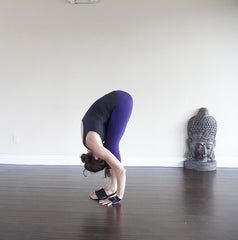Posted on November 17 2017

Imagine a great ancient tree with a wide trunk, whose root base digs deep into the Earth and spreads wide, holding the tree in place and physically connecting it to the Earth. From the Earth, the tree receives everything it needs to sustain itself. The tree is secure in this knowledge and day after day, reaches its branches toward the sky to happily drink in the sunshine. Now imagine yourself as the tree, with a deep woody root base that connects you to the physical world. Just as the tree drinks in the sunshine, you drink in the nourishing air around you, each breath a taste of sunshine that gives you a sense of well-being. This is the essence of a balanced Muladhara or base chakra
 Located at the base of your spine, below the sacrum, the Muladhara is symbolized by the color red. This energy center is the seat of your survival instincts. When Muladhara is balanced, you’re grounded in the world, both emotionally and physically. It shows in your posture, in the way you walk and in the way you feel about yourself. Everything around you is connected to you and you feel a sense of security and stability that drives a healthy sense of self in the physical world.
Located at the base of your spine, below the sacrum, the Muladhara is symbolized by the color red. This energy center is the seat of your survival instincts. When Muladhara is balanced, you’re grounded in the world, both emotionally and physically. It shows in your posture, in the way you walk and in the way you feel about yourself. Everything around you is connected to you and you feel a sense of security and stability that drives a healthy sense of self in the physical world.
Now imagine that tree in a hurricane. The roots slowly become drenched with excessive water from the storm. They begin to pull out of the mud while the some of the tree’s branches break and fall to the ground. Wind whips at the leaves, carrying some of them off into the air. The tree remains after the storm but is no longer stable in the Earth. This is the essence of unbalanced Muladhara. Fear is the basis for an unbalanced Muladhara. Your general sense of well-being is replaced by lack of sleep, restlessness, and anxiety. You no longer have trust in the world and have a hard time relaxing. You may become sick or have chronic lower back pain. Eating disorders are also related to an unbalanced Muladhara.
Healing an unbalanced Muladhara begins with grounding poses or asanas:
 |
Tadasana, or mountain pose, is one of the most balancing poses in yoga. Tada means mountain, and in the pose, your feet are firmly rooted to the ground while the crown of your head acknowledges the sky. While in tadasana, imagine your feet sprouting roots that draw deeply down to the ground. |
 |
Virabhadrasana II is derived from Vira Bhadra, meaning fierce warrior, hence the name Warrior II. YogaPaws are great for keeping you locked in place for challenging poses like this. YogaPaws are the yoga mat you wear to yoga anytime, anywhere. |
 |
Uttanasana, or standing forward bend, helps soothe the mind from “monkey mind,” or anxious thoughts. Stress and anxiety are hallmarks of unbalanced Muladhara. Coupling uttanasana with deep breathing stabilizes and centers the mind. |
 |
Parsvakonasana, or side angle pose, increases your stamina. and gives you a sense of stability. Remember to always anchor your back heel to the floor, which will power the asana and help you maintain stability while strengthening the legs, knees, and ankles. |
 |
Setu Bandha Sarvangasana is bridge pose, another grounding pose that stabilizes the core and deepens as the feet become more firmly rooted in the floor. Setu bandha Sarvangasana lifts the spirit with the heart, establishing a bond between our physical, emotional and spiritual being. |








